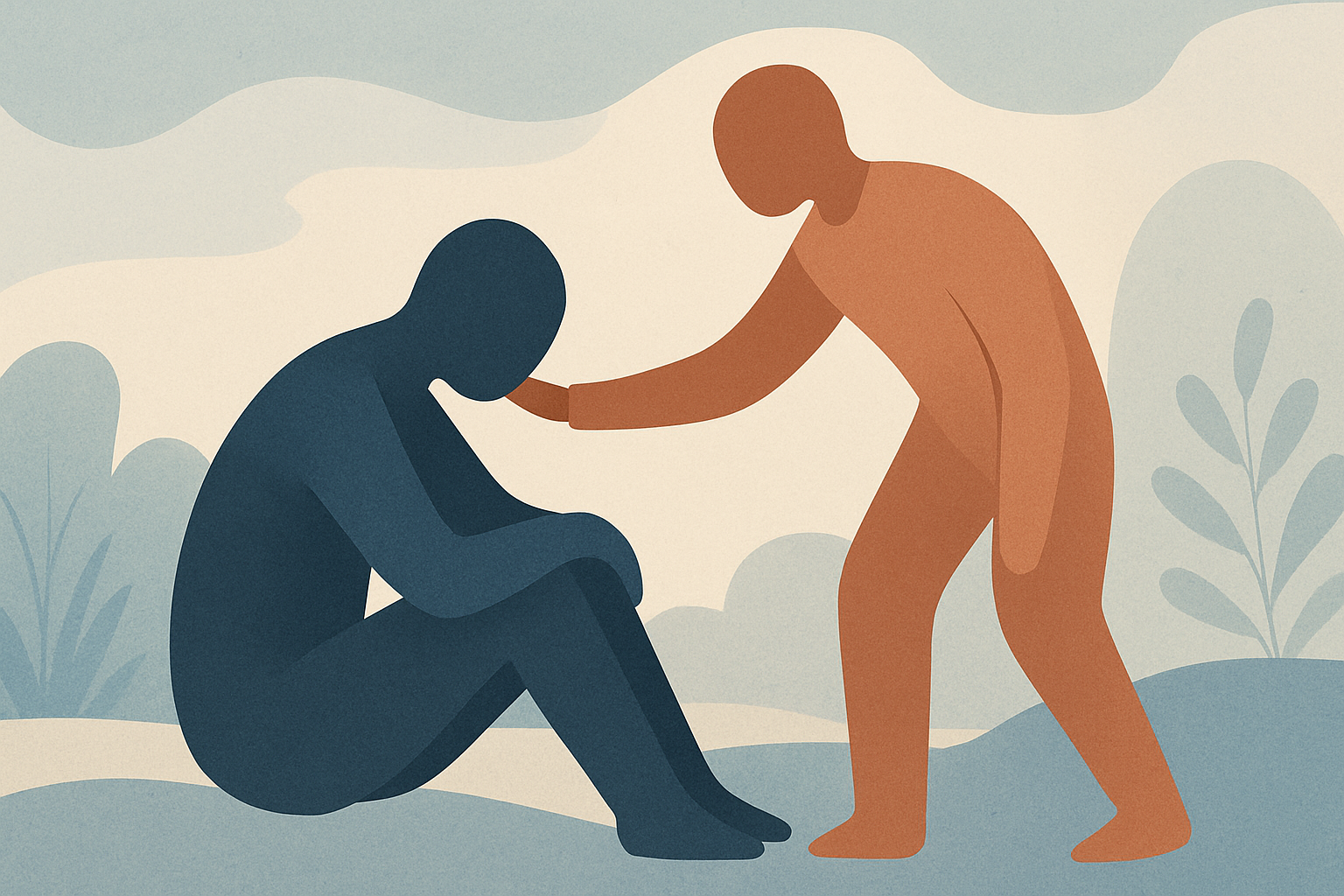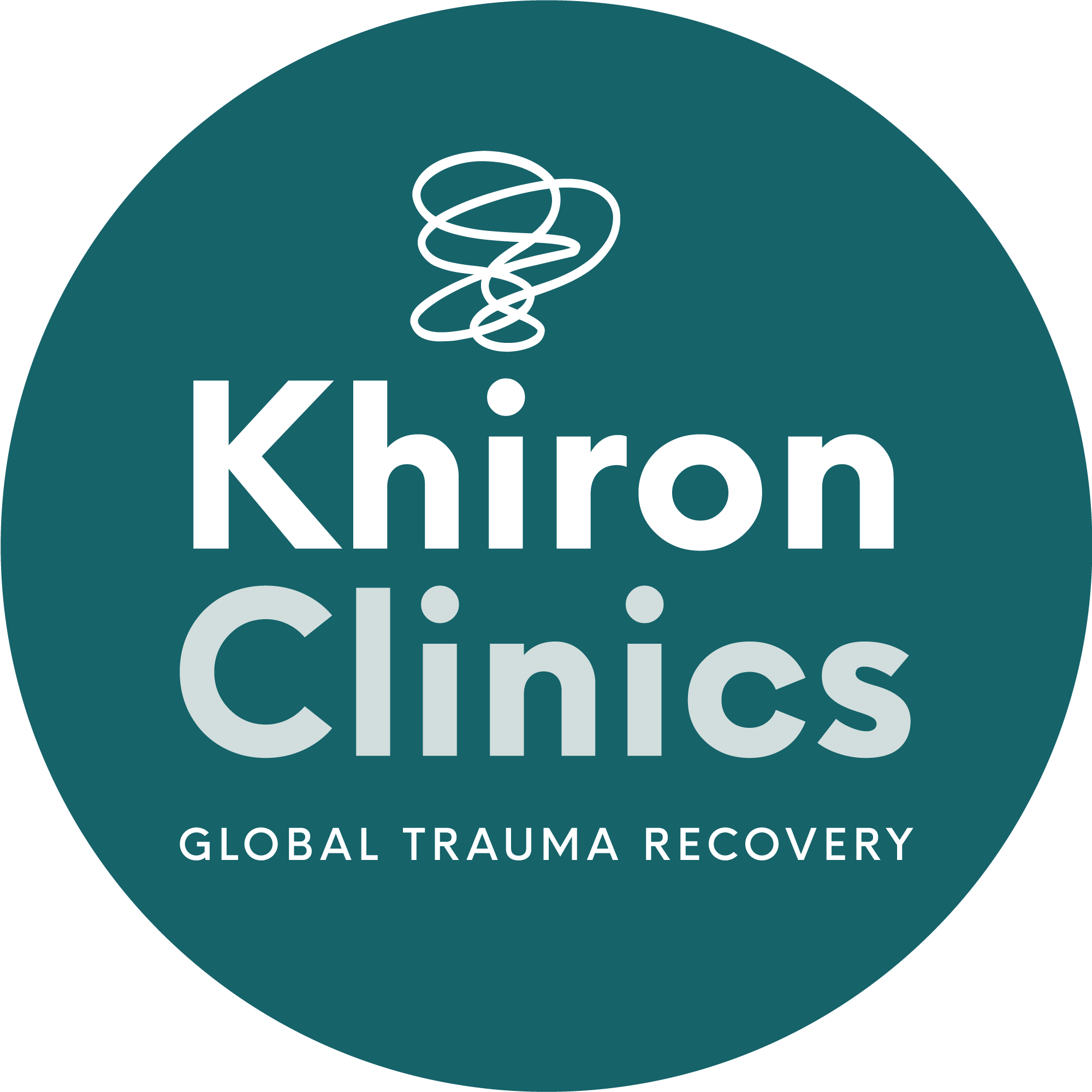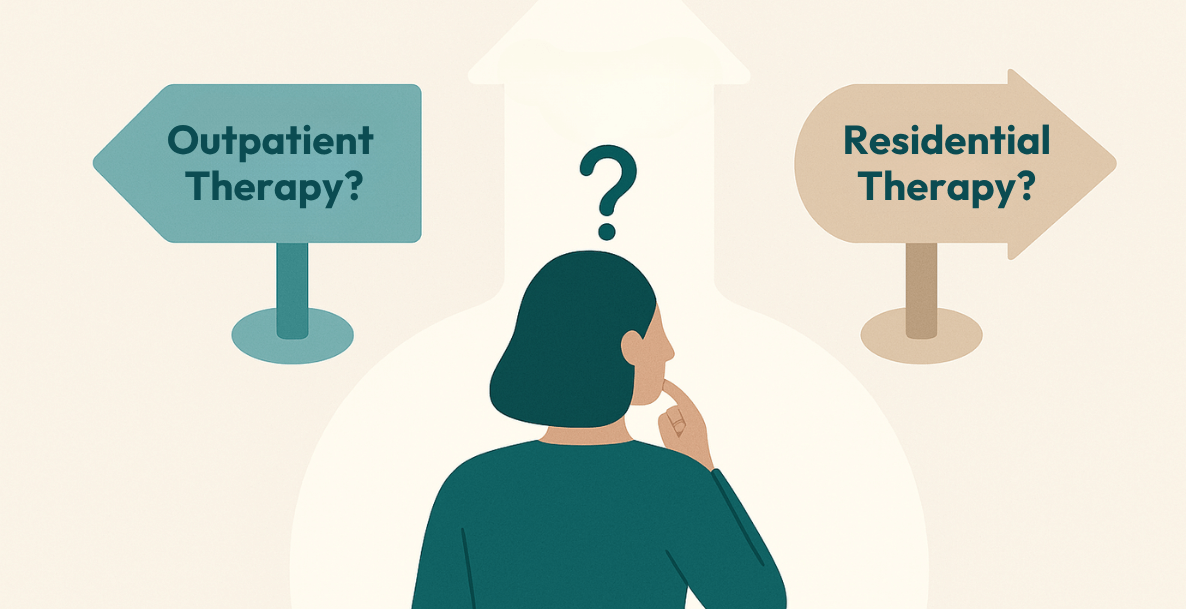First and most important: no two mental health crises are the same. You are not expected to manage every situation yourself. If the person you’re supporting is at risk of harming themselves or others, if you feel unsafe, or if the situation is escalating beyond what you can manage, it’s not only okay but essential to involve professional help. That might mean calling emergency services, contacting a crisis helpline, or asking a trained team to step in.
When it is possible to support someone at home, knowing what’s happening in their brain and body, and how to respond, can help you prevent further escalation and keep everyone safe.
At Khiron Clinics, our trauma-informed clinicians support people in mental health crisis crisis every day. We’ve seen how compassionate, practical steps can make a real difference. This guide offers strategies based on safety, trust, and respect, helping you to respond effectively while protecting your own well-being.
What is a Mental Health Crisis?
A mental health crisis can manifest in different ways and mean different things to different people. For some, it may be a moment of overwhelming emotions where they feel unable to cope. For others, it could be a prolonged period of distress that prevents them from functioning normally. In more severe cases, it can be a medical emergency, where a person’s safety is at risk due to self-harm or suicidal plans.
In this guide, we’re focusing on how to help individuals experiencing a crisis who are not posing an immediate risk to themselves or others. It’s important to note that situations where someone is at immediate risk of harm require urgent professional intervention and need to be handled differently.
What to Do If Your Life is at Risk Right Now
If you feel like you might attempt suicide or have seriously harmed yourself, you need urgent medical help. Please follow these steps:
- Call for an ambulance – Immediate help will get you to a safe place.
- Go straight to A&E, if you can – Emergency departments are equipped to help you through a crisis.
- Call your local crisis team, if you have their number – They are trained to support you in a mental health emergency.
- If you can’t do this by yourself, ask someone you trust to help you – It’s important to get the support you need right away.
Mental health emergencies are serious, and you’re not wasting anyone’s time by reaching out for help.
Understanding What’s Happening in a Crisis
When someone is in a mental health crisis, you may notice:
- Sudden mood changes or intense emotional outbursts
- Withdrawal from communication or daily activities
- Expressions of hopelessness or feeling unsafe
These behaviours often come from the survival brain being switched on. A helpful way to picture this is Dr Dan Siegel’s “flip your lid” model. In calm moments, the thinking brain (prefrontal cortex) is online, allowing reasoning, planning, and emotional regulation.
When the brain perceives danger, whether from a real event or a trauma trigger, the survival brain (limbic system) takes over.
The “lid” flips, the thinking brain goes offline, and the nervous system activates fight, flight, or freeze responses.
These responses might look like:
- Fight: anger, shouting, pacing, or confrontation.
- Flight: leaving the room, avoiding eye contact, or shutting down communication.
- Freeze: going still, going blank, or seeming unresponsive.
In these moments, logic and reassurance alone may not work, not because the person is unwilling, but because their brain literally can’t process them yet. Safety and regulation have to come first.
Prepare Your Own State
Your own emotional state sets the tone. If you feel panicked or frustrated, the other person’s nervous system may register you as a threat, even if your words are kind.
- Notice your stress signals: Do you speak faster? Cross your arms? Feel your heartbeat racing?
- Ground yourself: Take slow, steady breaths. Feel your feet on the floor. Focus on a fixed point in the room.
- Soften your body: Release your shoulders, unclench your jaw, relax your hands.
Think of yourself as the emotional anchor in a storm. The steadier you are, the more likely they are to find steadiness too.
Engage: Create Safety First
When someone’s nervous system is in fight, flight, or freeze, their brain is on high alert, scanning for danger. This threat detection is automatic and heightened, so tone of voice, facial expressions, sudden movements, lighting, or background noise can all feel brighter, louder and bigger, and potentially be misread as danger.
Because the thinking brain is offline, they cannot reason their way into feeling safe. They have to feel it through actions, tone, and the environment around them.
Practical steps to create that sense of safety:
- Soften lighting, reduce noise, and remove distractions.
- Give the person enough physical space so they don’t feel cornered.
- Keep your body language open. Relaxed shoulders, gentle facial expression, slow movements.
- Speak softly and evenly, avoiding sudden changes in volume.
- If others are increasing tension, ask them to leave the space.
- Take them to a space that feels safe for them, for example, their bedroom
Your presence should communicate: “You are safe right now. I am here with you.”
Avoid saying the words “you are safe”. Often this is difficult for someone to experience or hear and can also be triggering when it does not match how they are feeling. You can reassure them by saying “you are not in any danger”.
By lowering stimulation and staying non-threatening, you send cues to the survival brain that the danger has passed, making it easier for them to begin calming.
Supporting Regulation Through Polyvagal-Informed Strategies
When the nervous system is in fight, flight, or freeze mode, the body is flooded with intense energy, either mobilised (fight or flight) or immobilised (freeze). Understanding this can help tailor coping strategies to support calming and recovery.
Mobilised responses (fight/flight) release energy that often feels like restlessness, agitation, or panic. One of the key ways to regain calm is by safely moving this energy through gentle physical activity or grounding exercises.
Immobilised responses (freeze) often feel like numbness, disconnection, or “shutting down.” Here, strategies that gently stimulate the nervous system and encourage connection can help “unfreeze” and restore a sense of safety.
Here are some practical strategies rooted in polyvagal theory that can support the nervous system to settle:
Orientation: Reminding the person of where they are, inviting them to look around the room to recognise their surroundings. If there is disorientation, provide them with the basic facts, where they are, who they are with, the date and time.
Grounding Exercises: Grounding brings attention to the present. Holding a familiar object, naming things you can hear, feel, smell or taste, counting steps, and noticing the support of the ground beneath you can all help reconnect to the here and now.
Slow, Counted Breathing: Aim for 5 seconds in and out, counting breaths on your hand to stay focused, and integrating touch.
Applying Cold Water: Cold water on the face, wrists, or holding ice can soothe by stimulating the vagus nerve. Visualising a safe place while doing this can deepen the calming effect.
Vocalisations: Soft humming, singing, or gargling creates vibrations that relax the nervous system.
Active Listening: More Than Just Hearing
When the lid is flipped, the person may not be able to take in advice or explanations. But they can feel the impact of being truly listened to.
Active listening means:
- Giving your full attention without interrupting.
- Reflecting back what you hear to show understanding.
- Validating feelings without judgement.
Avoid arguing or trying to “solve” the problem in the moment. Safety and connection matter more than immediate solutions. As Deb Dana puts it, “story follows state”, meaning that when the body feels safe, the mind naturally starts to make sense of things differently. Rather than trying to change what the person is thinking or saying, focus on helping them feel safe first. The shift in perspective will often come later.
Respect Autonomy
- Speak with the person, not about or at them.
- Avoid commanding or controlling language. Replace “You need to calm down” with “Would it help if we took a break?”
- Ask permission, don’t assume what’s best for them, always ask.
- Acknowledge their right to feel what they’re feeling, even if it’s uncomfortable or hard to understand.
- Offer choices – this helps them feel supported in knowing they have agency.
Link The Next Steps
Once the nervous system has started to sense safety, you can introduce small, safe next steps.
- Offer limited choices, and not demands.
- Bring in trusted others or professionals if needed.
- Small, manageable actions help re-engage the thinking brain and reintroduce a sense of control.
- Offer coping strategies
When to Seek Professional Help Immediately
Sometimes, the safest and most caring choice is to involve professionals right away. Call for urgent help if:
- The person is threatening harm to themselves or others or has already harmed themselves.
- Aggression or physical behaviour is escalating.
- They have refused food, drink, or rest for a long time.
- You feel unsafe or unable to manage the situation.
Involving a crisis team or medical professionals is not a sign of failure. It’s an act of care — making sure the person gets the right level of support.
Recovery Is Ongoing
A mental health crisis is rarely a single, isolated event. The hours, days, and weeks after the crisis are an opportunity to rebuild safety, trust, and stability.
After things have settled, it can help to:
- Reflect together on what helped and what didn’t.
- Connect with therapy, peer support, or specialist services.
- Build routines and resources that reinforce safety and regulation.
- Create a safety plan together and a resource list to use as a reminder for what works in those times of distress.
Another key method of prevention is spotting the signs of dysregulation early.
Emotional Signs
- Sudden mood shifts (e.g. from calm to angry or tearful)
- Intense anxiety or panic
- Feelings of being overwhelmed or out of control
- Irritability or rage disproportionate to the situation
- Numbness, apathy, or emotional shutdown
Physical Signs
- Rapid breathing or holding breath
- Increased heart rate
- Sweating, shaking, or trembling
- Muscle tension or clenched jaw/fists
- Fatigue or low energy (especially in a freeze/collapse response)
- Fidgeting, pacing, or restlessness
- Sudden withdrawal (e.g. retreating to a corner or lying down)
Behavioural Signs
- Yelling, snapping, or blaming
- Refusing to talk or engage
- Self-soothing behaviours (e.g. rocking, humming, tapping)
- Risk-taking, self-harm, or aggression
- Avoidance of eye contact or social withdrawal
- Leaving abruptly or trying to flee the situation
- Inability to follow simple instructions or routines
Cognitive Signs
- Confusion or disorientation
- Difficulty concentrating or remembering things
- Racing thoughts or looping thoughts
- “Zoning out” or dissociating
- Rigid thinking or black-and-white responses
At Khiron Clinics, we offer trauma-informed care in both residential and outpatient settings, helping individuals and families move from crisis to stability. Our focus is always on calm, connection, and recovery — meeting each person where they are.






